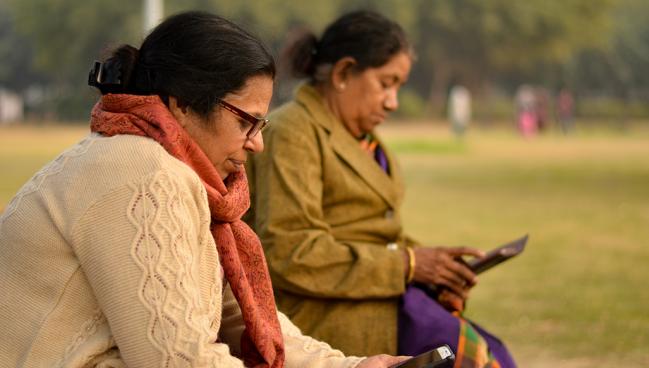Stark Inequities Plague AVR Rates for Women, Minorities in England
The data are in line with findings from the US, suggesting factors both within and beyond healthcare systems are involved.

Women and ethnic minorities in England are 25% to 35% less likely than men and white individuals, respectively, to receive valve replacement for aortic stenosis, according to a large national study.
The results are in agreement with similar data from the United States showing that that race, sex, age, and socioeconomic status influence AVR rates and access to TAVI, as well as long-held beliefs that aortic stenosis is a male disease, which may be stalling efforts to refer and treat women before decompensation occurs.
“Whether you are in an insurance-based model like the States or whether you're in the [National Health Service; NHS]—where it's free at the point of care—in both healthcare systems we're seeing these disparities,” said Benoy Shah, MBBS, MD (University Hospital Southampton NHS Foundation Trust, England), a co-author of the new study. “So, it can't just be ease of accessing healthcare because you don't have to pay to get treatment in the NHS and this is still an issue.”
When the authors looked at the incidence of timely SAVR or TAVI they found further disparities, with rates of 55% in Black and South Asian patients compared with 65% in white patients.
In their paper, led by Caoimhe Rice, MBBChir, MSc (Corevitas, London, England), Shah and colleagues say the reasons behind the disparities likely fall into three categories: patient-related aspects, factors tied to physicians and healthcare professionals, and issues intrinsic to the healthcare system itself.
“This is very crude, retrospective, zoomed-out data which is giving us a signal,” Shah told TCTMD. “What we really need now are much more specific studies, questionnaires, whatever they may be, that direct questions at patients and doctors and healthcare professionals that are trying to understand some of the factors that could be at play here.”
Longer Wait Times for Women
For the study, published October 3, 2023, in Open Heart, the researchers used the English Hospital Episode Statistics to identify 183,591 adults with aortic stenosis (mean age 79 years). Of those, 31,436 underwent SAVR or TAVI (mean age 72.4 years). A separate cohort included 10,069 adults (mean age 71.3 years) from the Clinical Practice Research Datalink to examine timeliness of AVR.
Compared with men, women were less likely to receive AVR (OR 0.65; 95% CI 0.63-0.66), with similar findings in Black (OR 0.70; 95% CI 0.60-0.82) and South Asian patients (OR 0.75; 95% CI 0.69-0.82) compared with those who were white.
Women also had longer wait times to receiving AVR after seeing a specialist than did men, and they had a greater number of primary care consultations than men prior to AVR.
When patients were categorized by Index of Multiple Deprivation (IMD), those in the top three most-deprived quintiles were significantly less likely to receive AVR than those in the least-deprived quintile (P < 0.001 for all comparisons). Additionally, the proportion of timely SAVR or TAVI was 68% in the least-deprived quintile compared with 58% for those in the most-deprived quintile. AVR was considered timely if it was performed electively and without evidence of cardiac decompensation.
Gender Gaps and Cultural Dissonance
For Shah, the data help contextualize the need for clinicians to dig deeper in their discussions with patients to understand how opportunities to intervene are slipping away or being unnecessarily dismissed.
“It could well be that there's just a cultural dissonance between the physician and the patient,” he said. For example, whereas one physician might perceive a patient’s attitude as disinterested, another with knowledge of their culture might be able to “read” the patient better and discuss treatment options rather than continue with medical therapy.
The treatment gender gap is another area where unconscious bias may be creeping in in a number of ways, with male physicians viewing some of their female aortic stenosis patients as frailer than they really are, or assuming that “because they don’t complain,” they don’t need AVR, Shah added.
Then there’s what the authors refer to as the “male as default” approach to care, where strong, otherwise healthy male aortic stenosis patients are more likely to be referred for AVR than women, especially by male physicians.
“Let's have a look at the numbers here. Why would it be 30% less likely for women to be offered treatment? It can't be that they were all afraid or they all said they were fine,” Shah said. “The way in which you [overcome] that, of course, is by doing what people are trying to do, which is increasing the number of women in medicine, in cardiology, in interventional cardiology.”
The authors also say the results illustrate why studies need to broaden their inclusion of underrepresented ethnic groups “to understand how discrepancies in management of aortic stenosis and provision of AVR can be addressed.”
L.A. McKeown is a Senior Medical Journalist for TCTMD, the Section Editor of CV Team Forum, and Senior Medical…
Read Full BioSources
Rice CT, Barnett S, O'Connell SP, et al. Impact of gender, ethnicity and social deprivation on access to surgical or transcatheter aortic valve replacement in aortic stenosis: a retrospective database study in England. Open Heart 2023;10:e002373.
Disclosures
- Rice is an employee of CorEvitas, which was funded by Medtronic to conduct the study.
- Shah reports no relevant conflicts of interest.





Comments